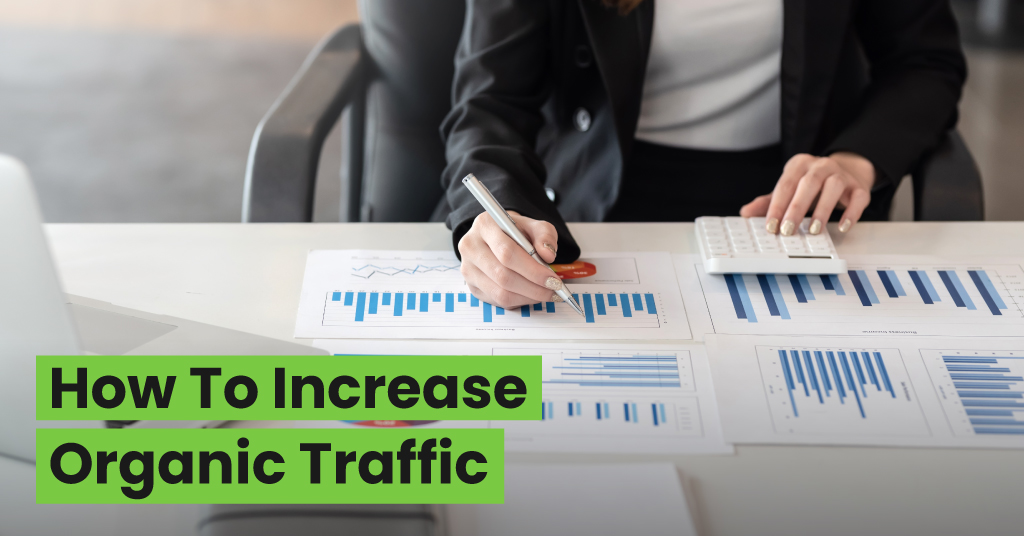I hope you enjoy reading this blog post.
If you want to get more traffic, Contact Us

Click Here - Free 30-Minute Strategy Session
Be quick! FREE spots are almost gone for this Month. Free Quote

Search Engine Optimisation (SEO) involves techniques to improve a website’s visibility in search engine results. Key elements of SEO include keyword research, which identifies phrases users commonly search for. Website optimisation focuses on enhancing loading speed, user-friendly design, and mobile compatibility. On-page SEO encompasses optimising meta tags, headers, and content with relevant keywords. Off-page SEO includes backlink strategies from reputable sites to boost authority. Search engine algorithms prioritise high-quality, relevant content, which is crucial for organic traffic. Structured URLs and proper formatting help search engines index content efficiently. Transitioning between these efforts ensures cohesive and effective implementation.
Organic traffic is the backbone of online visibility, driven by users finding websites naturally through search engines. It ensures stability and long-term growth without the direct expense of paid advertisements. Websites benefit from organic traffic by attracting relevant audiences who actively seek their products, services, or content, improving engagement and conversion rates.

Click Here – Free 30-Minute Strategy Session
Be quick! FREE spots are almost gone for this Month
Effective organic traffic leads to increased brand recognition, optimised user experience, and sustained online presence, making it essential for online success.
Keyword research is a cornerstone of any SEO strategy. Using simple tools such as Google Keyword Planner or free platforms like Ubersuggest helps identify keywords relevant to the target audience. These tools reveal search volume, competition levels, and potential long-tail keyword opportunities that drive traffic effectively.
To begin:
Using spreadsheets for organisation ensures better tracking and planning for content optimisation around chosen keywords.
To boost on-page visibility, every optimisation must serve both users and search engines. Incorporating a primary keyword naturally into title tags and headings enhances relevance.
Headings should be structured logically, using a clear hierarchy from H1 to H3 to ensure readability and SEO-friendliness.
Meta descriptions, while not direct ranking factors, should be compelling, concise, and rich in keywords to encourage click-throughs. Internal linking bolsters site navigation and helps distribute link equity across pages.
Image optimisation involves compressing file sizes, including descriptive alt text, and using keyword-rich filenames.
Engaging content with well-placed keywords increases dwell time while structured data markup enriches search results through snippets.
Creating SEO-friendly content begins with understanding user intent and keyword research. Writers must focus on topics users are searching for, aligning with relevant keywords strategically placed in titles, headings, and throughout the text.
High-quality content engages readers while helping search engines understand its relevance.
Backlinks are an essential element of search engine optimisation, directly influencing organic traffic. They act as votes of confidence, signalling to search engines that a website is trustworthy and credible. High-quality backlinks from authoritative websites not only improve domain authority but also enhance a site’s ranking on search engine result pages (SERPs), drawing more organic visits.
Fostering relationships through guest posts, influencer collaborations, and editorial mentions ensures steady backlink growth.
Website load speed plays a pivotal role in maintaining user engagement and reducing bounce rates. Slow-loading pages can frustrate visitors, which negatively impacts organic traffic. Search engines also factor loading times into rankings, making optimising speed crucial for SEO.
Improved website speed ensures a seamless browsing experience while boosting search engine rankings, ultimately increasing organic traffic.
Search engines prioritise websites that provide seamless user experiences across all devices, especially mobiles. Ensuring mobile-friendly designs increases organic traffic by improving visibility in search engine rankings. Responsive design adapts layouts to various screen sizes, offering smoother navigation.
Key features include fast loading times, readable fonts, and intuitive buttons. Mobile designs should minimise intrusive elements like pop-ups and ensure content is accessible without excessive zooming or scrolling. Google’s mobile-first indexing further emphasises the importance of optimising for smaller screens.
Evaluating a site’s mobile usability through tools like Google’s Mobile-Friendly Test helps identify improvements that can boost site rankings effectively.
Businesses can strengthen their online presence by focusing on local SEO techniques tailored to their geographic audience. Optimising Google My Business profiles ensures accurate location details, opening hours, and customer reviews. Utilising location-specific keywords within titles, meta descriptions, and webpage content enhances search relevancy. Incorporating locally-focused blog posts or promotions establishes deeper audience connections. Mobile responsiveness plays a critical role, as searches often occur via smartphones during physical travel. Citation building across local directories ensures consistent business information and credibility. Earning backlinks from local organisations further elevates search ranking potential while fostering trust within the community.
Monitoring performance metrics is essential to optimise an SEO strategy effectively. By using tools like Google Analytics and Google Search Console, one can evaluate key indicators such as organic traffic, bounce rate, and click-through rates (CTR). Tracking keyword rankings reveals which terms drive the most traffic, while analysing user behaviour provides insights into content performance.
Patterns such as high bounce rates may highlight optimisation needs, like improving page relevance or speed. A/B testing different tactics—like headline formats or meta descriptions—can demonstrate what resonates most. Regularly assessing progress ensures the strategy evolves with search engine algorithms and user behaviour changes.
Social signals, such as likes, shares, and comments, play a pivotal role in enhancing organic reach. They signal to search engines that content is valuable and relevant, which can influence rankings. Search engines often prioritise popular content that demonstrates user engagement. Platforms like Facebook, Instagram, and Twitter offer opportunities to increase visibility through audience interactions. When users share or comment on posts, it broadens their reach and exposure to a wider audience. Integrating share buttons on web pages encourages visitors to amplify your content. High social engagement builds trust, potentially driving more visitors and strengthening SEO performance.
Internal linking serves as a roadmap, guiding users to relevant content within a website. By strategically placing links to related articles, product pages, or in-depth resources, one can keep visitors engaged for longer durations. Internal links help distribute link equity throughout the site, reinforcing search engine rankings for key pages.
For implementation:
Search engines analyse internal links to better understand site structure, improving crawl efficiency. As a result, users and search bots seamlessly navigate the site, fostering engagement and discoverability.
To keep organic traffic growing, businesses must adapt to evolving SEO trends. Search engines regularly update algorithms, affecting ranking factors that require attention. Staying informed on changes, such as Google’s Core Updates, helps in refining strategies effectively.
Monitoring industry forums and authoritative blogs ensures businesses remain competitive in dynamic SEO landscapes.
Avoiding frequent SEO errors is essential to maintaining steady organic traffic. Overshooting keyword density risks penalisation by search engines. Over-optimised anchor texts not only appear unnatural but can negatively affect rankings.
Ignoring mobile responsiveness may alienate a significant percentage of users, as search engines prioritise mobile-friendly sites. Failing to regularly audit broken links risks reducing user engagement and site credibility.
Thin content undermines value for visitors and search engines alike, making rich, informative pages crucial. Overlooking metadata prevents pages from standing out on search engine results pages, limiting click-through rates. A well-balanced approach guarantees long-term traffic retention.

LEAVE A REPLY